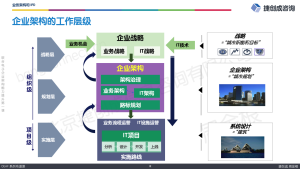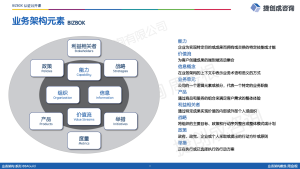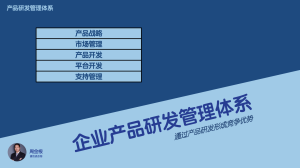转自:https://atlan.com/non-invasive-data-governance/
Non-invasive data governance (NIDG) is a model of data governance that advocates for the least amount of disruption while still effectively managing and ensuring the quality, privacy, and protection of data in an organization.
The term ‘non-invasive data governance’ is associated with Robert S. Seiner, who presented it in his book “Non-Invasive Data Governance: The Path of Least Resistance and Greatest Success”.
This model operates under the principle that data governance is a necessary function of business operations. And as such, it should be integrated seamlessly into the business without causing unnecessary disruption to daily tasks.
Let’s dive in!
Table of contents
- What are the key principles of non-invasive data governance?
- When was the term “Non-invasive data governance” coined and by whom?
- What does the book “Non-Invasive Data Governance” speak about?
- Salient features of the book by Robert S.Seiner: Explained in detail
- How to create a non-invasive data governance framework?
- Rounding it up all together
- Non-invasive data governance: Related reads
What are the key principles of non-invasive data governance?
The term “non-invasive” implies that data governance should naturally happen as part of day-to-day operations and should not be seen as a separate, burdensome process. It should be formal, yet not invasive or rigid.
The key principles of Non-Invasive Data Governance include:
- Recognition of existing governance
- Roles and responsibilities
- Stewardship
- Incremental implementation
- Proactive control
- Communication
Let us understand each of them in a bit of detail:
1. Recognition of existing governance
NIDG assumes that some form of governance already exists in the organization, whether formal or informal. This approach recognizes and leverages this fact instead of attempting to impose a completely new structure.
2. Roles and responsibilities
The non-invasive model assigns roles, responsibilities, and accountabilities based on people’s existing jobs and relationships to data. This way, people are doing what they’ve always been doing.
However now with recognized responsibilities and a formal title associated with their governance-related activities.
3. Stewardship
Data stewards play a crucial role in the non-invasive model. They are often the ones handling the data directly. The stewardship roles are formalized, and these individuals are given responsibilities to ensure:
- Data’s accuracy
- Data privacy
- Data security
- Data value
4. Incremental implementation
NIDG promotes an incremental approach to implementation rather than trying to apply governance to all data elements at once. The focus is on the most critical data elements that have a significant impact on business operations and decision-making.
5. Proactive control
The non-invasive model emphasizes proactive control over reactive control, focusing on preventing data issues rather than responding to them after they occur.
6. Communication
This model encourages communication and collaboration across the organization. It aims to make everyone in the organization a data steward in their own right by incorporating data governance into their roles.
By adopting a Non-Invasive Data Governance model, organizations can make the most of their data without drastically changing the way they operate. This model can help an organization like yours, with a federated DataOps model, to integrate various data silos effectively without disrupting the existing structure and workflows.
When was the term “Non-invasive data governance” coined and by whom?
The term “Non-invasive data governance” was coined by Robert S. Seiner, a well-known expert in the field of data governance.
- He introduced the concept in his book ”Non-Invasive Data Governance: The Path of Least Resistance and Greatest Success,” which was published in 2014. Seiner’s work in data governance extends back several decades.
- Before writing his book on non-invasive data governance, he contributed significantly to the data governance field through his consulting work, presentations, and articles. He is also known as the publisher of the Data Administration Newsletter (TDAN.com), which is an acclaimed online publication in the field of data management.
- His approach to non-invasive data governance arose from his experiences working with different organizations on their data governance strategies.
He observed that many traditional data governance programs failed because they were too disruptive, difficult to implement, or seen as overly bureaucratic.
In response, he developed the concept of non-invasive data governance as a way to formalize existing data-related roles, responsibilities, and practices in a way that was less disruptive and more effective.
His approach recognizes that most organizations already have some informal data governance practices in place – they may just not label them as “data governance.” The goal of non-invasive data governance, then, is to identify and leverage these existing practices.
This helps in providing a framework for formalizing and improving them without the need for a significant organizational overhaul.
What does the book “Non-Invasive Data Governance: The Path of Least Resistance and Greatest Success” speak about?
The book by Robert S. Seiner’s book “Non-Invasive Data Governance: The Path of Least Resistance and Greatest Success” is divided into several sections. These sections collectively provide a comprehensive guide to Seiner’s non-invasive approach to data governance.
Let us look into a brief summary of each of its sections:
1. Introduction
Seiner starts with a brief introduction to the data governance discipline. He introduces readers to the concept of Non-Invasive Data Governance, explaining the philosophy behind this approach and how it differs from traditional data governance models.
He establishes the principle that every organization is already governing its data somehow, whether formally or informally.
2. Framework of Non-Invasive data governance
This section delves into the main tenets of Non-Invasive Data Governance. Seiner discusses the importance of :
- Recognizing and leveraging the existing governance
- Formalizing accountabilities
- The roles and responsibilities based on people’s existing relationship to the data.
He emphasizes the value of communication and collaboration across the organization.
3. Getting started
Seiner provides practical advice on how to get started with implementing non-invasive data governance in an organization. This includes tips on:
- How to identify and engage with key stakeholders?
- How to establish a data governance office?
- How to develop a data governance program plan?
He also provides a detailed roadmap for non-invasive data governance implementation.
4. Role of data stewards
The book discusses in depth the crucial role of data stewards in a non-invasive data governance program. Seiner explains how to identify and define data stewards, how to divide stewardship responsibilities, and how to train, support, and recognize data stewards.
5. Metadata and Non-invasive data governance
Here, Seiner discusses the importance of metadata in non-invasive data governance. He covers how to manage metadata, its role in data governance, and how to incorporate it into the data governance program.
6. Measuring success
This part of the book covers how to measure and demonstrate the success of the non-invasive data governance program. Seiner discusses the importance of establishing metrics and key performance indicators, and how to communicate the value of the data governance program to stakeholders.
7. Challenges and overcoming them
Lastly, Seiner discusses some common challenges encountered when implementing a non-invasive data governance program and provides advice on how to overcome them.
In summary, the book offers a detailed guide on implementing a non-invasive approach to data governance, filled with practical tips and strategies drawn from Seiner’s extensive experience in the field.
It serves as a valuable resource for those looking to understand and implement non-invasive data governance in their organizations.
Salient features of the book by Robert S.Seiner: Explained in detail
In this section let’s dive deeper into each section of Robert S. Seiner’s “Non-Invasive Data Governance: The Path of Least Resistance and Greatest Success”.
Introduction
- Seiner introduces the concept of Non-Invasive Data Governance (NIDG), positioning it as a less disruptive and more efficient approach to data governance.
- He emphasizes that every organization is already governing data, and the NIDG framework serves to formalize and improve these existing practices.
Framework of Non-invasive data governance
- NIDG is based on formalizing existing practices and roles, rather than creating new ones from scratch.
- The approach calls for recognition and capitalization of any existing governance structure, no matter how informal.
- Roles, responsibilities, and accountabilities are assigned based on people’s existing jobs and relationships to data.
- Emphasizes the value of communication and collaboration across the organization.
Getting started
- Identifying and engaging key stakeholders is crucial when initiating a data governance program. They help set the program’s direction and garner support.
- Establishing a data governance office can serve as the program’s center, driving governance initiatives and maintaining a company-wide perspective.
- A data governance program plan should be developed, including a detailed roadmap for implementation.
- NIDG implementation is incremental, focusing on the most critical data elements first.
Role of data stewards
- Data stewards are crucial in a NIDG program. They are typically the ones who directly handle data.
- Stewards’ responsibilities should be clearly defined, based on their relationship with data.
- Training and supporting data stewards is essential for effective governance.
- Recognition for the data stewards’ efforts can help to maintain their motivation and commitment.
Metadata and Non-invasive data governance
- Metadata is critical in data governance as it provides context and makes data understandable and usable.
- Managing metadata effectively involves keeping it accurate, accessible, and comprehensive.
- Incorporating metadata into the data governance program can help ensure the consistency and reliability of data.
Measuring success
- Defining and measuring success is important for maintaining support and enthusiasm for the data governance program.
- Key Performance Indicators (KPIs) and metrics should be established to track progress and success.
- Communicating the value of the data governance program to stakeholders is key. This can be achieved through regular reports, presentations, and discussions.
Challenges and overcoming them
- Some common challenges include resistance to change, lack of executive support, and poor understanding of data governance.
- Overcoming these challenges involves clear and frequent communication, executive sponsorship, adequate training, and demonstration of the program’s value.
These points should serve as a comprehensive overview of Seiner’s Non-Invasive Data Governance. However, the book itself contains much more detailed insights and practical advice. It is highly recommended for anyone interested in implementing a NIDG program in their organization.
How to create a non-invasive data governance framework?
Creating a Non-Invasive Data Governance (NIDG) framework requires a thoughtful approach that respects existing processes and roles.
Here’s a step-by-step actionable guide:
- Understanding the current state
- Defining the data governance goals
- Establishing a data governance office (DGO)
- Recognizing and formalizing existing roles
- Training and supporting data stewards
- Developing policies and procedures
- Implementing in an incremental manner
- Setting up metrics and KPIs
- Continual communication and improvement
Now, let us understand each of the above steps in detail:
1. Understanding the current state
Before any governance framework is implemented, it’s important to understand the current state of data governance in your organization. Look for existing processes that involve:
- Data creation
- Data storage
- Data management
- Data usage
Identify individuals who are already handling these processes and understand their relationship to data.
2. Defining the data governance goals
Based on your organization’s strategic objectives, define clear goals for your data governance initiative. This might involve ensuring data quality, improving data security, achieving regulatory compliance, enabling better decision-making, or other objectives specific to your organization.
3. Establishing a data governance office (DGO)
While NIDG is non-invasive, a centralized body like a DGO can help coordinate and guide the program. The DGO can develop policies, offer guidance, coordinate among different departments, and track the progress of the governance initiative.
4. Recognizing and formalizing existing roles
Identify the individuals who are already performing data management tasks, and formalize their roles as data stewards. Assign responsibilities based on their existing relationship with the data. This may include data creators, custodians, users, and processors.
5. Training and supporting data stewards
Provide the necessary training and support to your data stewards so they can effectively perform their roles. This could involve training on:
- Data management best practices
- Privacy regulations
- The use of any tools or systems used in the governance program
6. Developing policies and procedures
Develop clear policies and procedures to guide the management of data in your organization. This should cover all aspects of data governance, including data quality, data privacy, data access, data lifecycle management, and more.
These policies and procedures should be integrated into existing workflows as much as possible.
7. Implementing in an incremental manner
Start by applying the governance framework to the most critical data elements. As the program matures, gradually extend its scope to cover other data elements. This incremental approach allows for early wins and helps build support for the program.
8. Setting up metrics and KPIs
Establish metrics and Key Performance Indicators (KPIs) to measure the effectiveness of the data governance program. This might involve tracking improvements in data quality, reductions in data breaches, improved compliance levels, or other metrics relevant to your goals.
9. Continual communication and improvement
Communicate the progress and successes of the data governance program to stakeholders regularly. Use feedback and metrics to continually improve the program.
By following these steps, you can establish a Non-Invasive Data Governance framework that is tailored to your organization’s needs and culture, maximizing the chances of success.
Rounding it up all together
NIDG is a model of data governance that emphasizes minimal disruption, assigning data-related roles, based on people’s existing jobs and relationships to data.
It aims to formalize and improve the existing data practices, assuming some form of governance already exists, whether formal or informal.
The term “Non-Invasive Data Governance” was coined by Robert S. Seiner, a prominent expert in the data governance field. He introduced the concept in his book, “Non-Invasive Data Governance: The Path of Least Resistance and Greatest Success,” published in 2014.
By implementing a NIDG model, organizations can achieve effective data governance that integrates seamlessly into existing business operations, ultimately enhancing the quality, privacy, and protection of data.
Non-invasive data governance: Related reads
- What is Data Governance? Its Importance, Principles & How to Get Started?
- Snowflake Data Governance Features, Frameworks & Best Practices
- How to implement data governance? Steps, Prerequisites, Essential Factors & Business Case
- 7 Best Practices for Data Governance to Follow in 2023
- Automated Data Governance: How Does It Help You Manage Access, Security & More at Scale?
- Data Governance and Compliance: Act of Checks & Balances
- Data Governance vs. Data Management: What’s the Difference?
- How to Improve Data Governance? Steps, Tips & Template
- 7 Steps to Simplify Data Governance for Your Entire Organization



